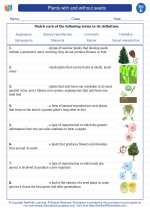Angiosperms: The Flowering Plants
Angiosperms are a group of plants that produce flowers and fruits. They are the most diverse group of plants on Earth, with over 300,000 species.
Key Characteristics of Angiosperms
- Flowers: Angiosperms produce flowers for reproduction. These can be simple or complex, and come in a wide variety of shapes, sizes, and colors.
- Fruits: After the flower is fertilized, it develops into a fruit, which protects the seeds and aids in their dispersal.
- Vascular Tissue: Angiosperms have well-developed vascular tissue, including xylem and phloem, which allows for efficient transport of water, nutrients, and sugars.
- Seeds: Angiosperms produce seeds enclosed within fruits. This provides protection and helps with dispersal.
Importance of Angiosperms
Angiosperms are incredibly important for both ecosystems and human society. They form the basis of most terrestrial food chains and provide numerous products such as fruits, vegetables, grains, fibers, and medicines.
Life Cycle of Angiosperms
Angiosperms undergo a complex life cycle that involves alternation of generations, with a diploid sporophyte stage and a haploid gametophyte stage. The process of pollination, fertilization, and seed development is key to their reproductive cycle.
Classification of Angiosperms
Angiosperms are classified into two main groups: monocots and dicots. Monocots have one cotyledon (seed leaf) in their embryos, while dicots have two. These groups have distinct characteristics in terms of their leaves, stems, roots, and floral parts.
Study Tips
- Learn to identify common angiosperm families and their distinguishing features.
- Understand the process of pollination, fertilization, and seed dispersal in angiosperms.
- Study the economic importance of angiosperms and the products derived from them.
- Practice distinguishing between monocots and dicots based on their characteristics.
By understanding the key characteristics, importance, life cycle, and classification of angiosperms, you can gain a comprehensive understanding of these fascinating flowering plants.
.◂Science Worksheets and Study Guides Fifth Grade. Plants with and without seeds
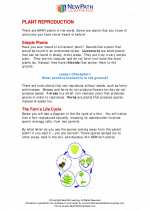
 Worksheet/Answer key
Worksheet/Answer key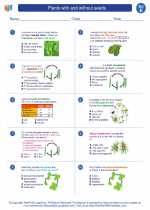
 Worksheet/Answer key
Worksheet/Answer key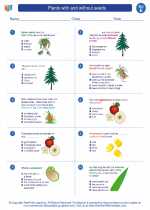
 Worksheet/Answer key
Worksheet/Answer key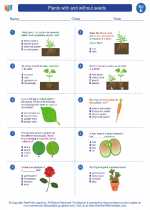
 Vocabulary/Answer key
Vocabulary/Answer key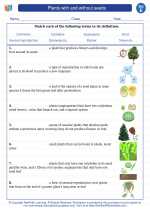
 Vocabulary/Answer key
Vocabulary/Answer key